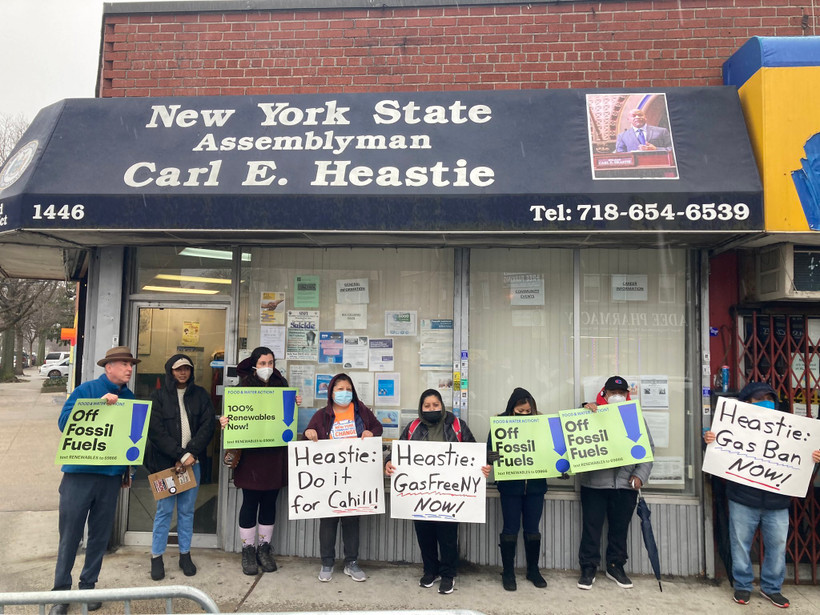The Failure to Ban Gas in New Construction is a Bad Sign for New York’s Climate Law
The state’s own expert council, tasked with planning the law’s implementation, told the legislature to pass a gas ban this year. They were ignored.

The state’s own expert council, tasked with planning the law’s implementation, told the legislature to pass a gas ban this year. They were ignored.

I hope this article helped you better answer the question that guides all of our journalism: Who runs New York? Before you click away, please consider supporting our work and making more stories like this one possible.
New York state is standing at a crossroads for climate action. After passing one of the nation’s most ambitious climate laws in 2019, the state is lagging far behind on its targets, struggling to meet deadlines to build renewable energy and clean up its buildings and roads. Other states are closely watching our progress, making decisions about their own climate plans based on New York’s ability to implement this legislation.
As New York’s only statewide nonprofit news publication, we’ve been scrutinizing the state’s climate progress. Our journalism exists to unpack how power works in New York, analyze who’s really calling the shots, and reveal how obscure decisions shape ordinary New Yorkers’ lives.
But we can't do this work without your help. We rely on reader donations to help sustain our outlet, and every gift directly allows us to publish more pieces like this.
Our work has already shown what can happen when those with power know that someone is watching, with my reporting prompting a state investigation and fine for a major corporation. I have more story ideas than I can count, but only limited resources to pursue all the leads that come across my desk.
If you’re able, please consider supporting our journalism with a one-time or monthly gift. Even small donations make a big difference.
Thank you for reading.

The governor’s proposal could leave 24 districts with less Foundation Aid than expected. The one-house budgets aim to fix that.
Nonprofits form the backbone of the state’s social service sector, and they may be getting some overdue relief in this year’s budget.
The legislature rejected Hochul’s central public safety policy priorities while embracing proposals to increase prison oversight.
Here’s where the Senate, Assembly, and governor stand on funding New York’s green transition.
In many cases, electrifying homes is cheaper, according to one new study.
The state is pushing ahead on all-electric buildings, but a draft update to the building code leaves out other key recommendations from the state’s climate plan.
The state has yet to publish a building code update, promised in December, which should include requirements to phase out fossil fuel appliances in new homes.
The Bronx Community Foundation spent almost none of the funds it raised for victims of the 2022 Twin Parks apartment fire.
Hochul is pushing an array of financial incentives to tackle the state’s housing crisis. But will they make a dent?